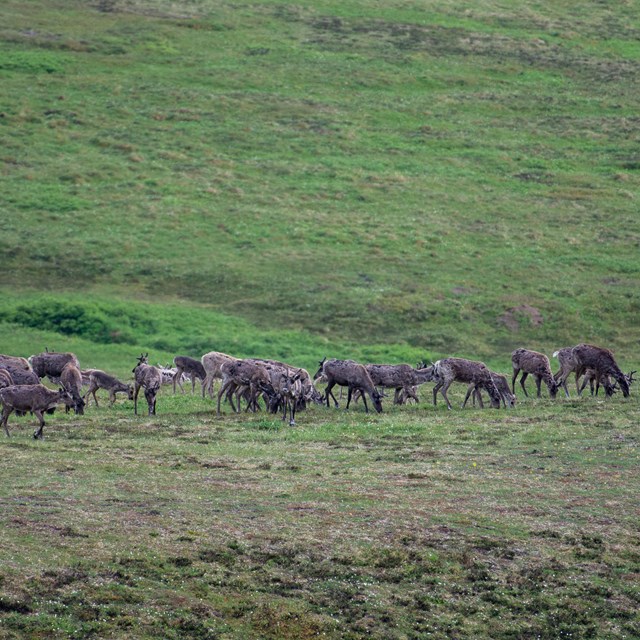|
Caribou (Tuttu) (Rangifer tarandus) are large grazing mammals native to arctic and subarctic regions of North America, Asia and Europe. They are members of the deer family (Cervidae) and can typically be found in tundra and boreal forest habitats. They can be anywhere between five and six and half feet long, two and half to five feet high at the shoulder, and weigh between 130 and 600 pounds. Both males and females grow antlers, though male antlers are larger and more branched than females. Explore the links below to find out more about caribou!
|
Last updated: December 10, 2025


